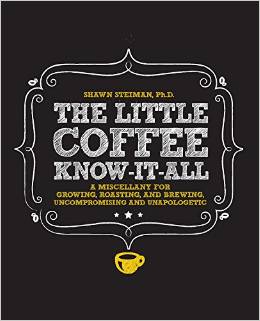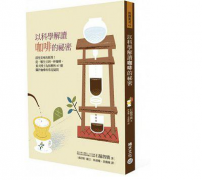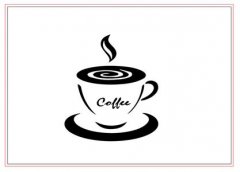Coffee book recommendation: "the Little Coffee Know-It-All"

Title: the Little Coffee Know-It-All
Author: Shawn Steiman,Ph.D
Ways to buy books: Amazon China
Books are suitable for:
1. Coffee lovers
2. Barista
3. Other coffee makers
Book introduction:
Another coffee book in the form of a question and answer. If you have ever read the book the Secrets of Coffee in Scientific interpretation by Dr. Shiwai Zhihiro, you should be familiar with this model.
Like Dr. Shiwei Zhiguang, the author of this book is also a doctor. the content of the article is reasonable and reliable.
If you like "Scientific interpretation of Coffee", then this book will also be a good choice.
The book is divided into four parts: raw beans, baking, extraction, and contents in the cup.
Each theme involves 4 to 10 frequently asked questions, such as "is deep-roasted coffee more caffeinated" and "what is the best coffee in the world?" .
Most of the problems are often faced by coffee lovers and practitioners, and they are also the most curious. For these seemingly simple questions, as long as you do a little homework, you will get a variety of answers from many ways. What is so special about the answers in this book?
objective.
The author makes it clear at the beginning that the answers to many of the questions in the book come from the existing research literature, which is not guaranteed to be omitted, but to answer in the spirit of science. If the existing research on some issues does not reach a consistent conclusion, then show the different conclusions to the reader.
According to the book, it is hoped that this book will provide readers with a different perspective.
After reading the whole book, I do have a deeper understanding of many issues.
Let me give you an example: about "shade planting".
Previously, the shading planting of coffee trees learned through various ways mainly focused on the benefits of shading, emphasizing ecological diversity and sustainability. And usually, if you think a little more, there will be doubts. In addition to shading, there are many coffee trees that grow without shade, no matter whether they are shaded or not, they all have great boutique coffee, so is shading planting just for sustainability and ecological considerations?
The book says that when coffee is unshaded, it blossoms more and bears more fruit, and more fruit is good for the harvest, but for the coffee tree itself, more fruit needs more nutrients, if necessary. Artificial fertilization must be applied to ensure nutrient supply.
In addition, the sunlight environment is also beneficial to the growth of weeds and coffee pests, herbicides and pesticides are needed if necessary to control weeds and pests, except for organic considerations. considering that most coffee comes from small farms and high-quality coffee grows more than high-quality coffee in high mountains, the difficulty and cost of the operation are not common. In addition, when picking coffee, the work under the shade tree is obviously more comfortable. If you think about it in this way, perhaps, shade planting is more than just a moral choice.
In addition, there are few clear explanations on the two issues of "the nomenclature of the kettle" and "the taste recognition map of the tongue" in the existing books. The racing kettle has nothing to do with the principle of racing wind. It is called a vacuum kettle. The taste recognition picture of the tongue is misunderstood.
The answer to many questions, or the way in which they are answered, may not be difficult for most coffee makers. What makes this book special is that it gives a lot of details. Perhaps, these details have long been in the reader's mind, but they have not yet been expressed in logical and clear language like the author. In this way, the author has indeed been a great help.
Although there are many reviews of research results in the book, do not worry, this is definitely not a degree thesis, the author himself has given reassurance, although it involves a lot of scientific principles, but it will never make readers feel as if they are back in high school class. the whole is still very funny and humorous.
However, there are a few things that need to be thought about. For example, the author says that when analyzing a problem scientifically, a very important tool is statistics. Well, I have to admit that the knowledge of statistics and probability that I have learned has been basically returned to the teacher, so when it comes to the question of "what is the best coffee in the world" in the book, the conversion principle of the author's probability, really can only accept the degree of conclusion.
As mentioned earlier, this book is similar to the book "Coffee answered by Science", which is endorsed by scientific research and written in the form of questions and answers. So, what's the difference between the two books?
The Japanese are really careful.
In fact, there is not much difference in page numbers between the two books. Science is about 180 pages and this book is about 130 pages. Considering that the typography of "Science" is loose and the number of pages is similar. But there are at least 80 questions listed in Science, and about 30 in this book.
If there are many problems, the natural coverage will be wide, and it will basically be wiped out in great detail. However, from another point of view, if the area is wide, the depth will be adjusted accordingly. After all, not everyone can read scientific papers.
The questions in this book are relatively more concise, basically covering common questions, and the discussion of each question is relatively detailed. At the simplest point, the length of the discussion is very clear. "Science" is basically a question on a page, and it is mostly accompanied by illustrations. The book is basically on two or three pages.
In addition, when it comes to similar topics, such as extraction, the perspectives of the two authors are obviously different. The Japanese author pays more attention to the result, describing the composition and origin, and the use of various extraction tools, while the author of this book focuses on the fact that the essence of coffee extraction is dissolution, and the factors that affect the dissolution are explained one by one. The methodology is given.
Then, in terms of publication time, this book is 2015, and the information in the book is more synchronized. For example, the Alitalia coffee machine reported in mid-2015 also made a guest appearance in the book.
Important Notice :
前街咖啡 FrontStreet Coffee has moved to new addredd:
FrontStreet Coffee Address: 315,Donghua East Road,GuangZhou
Tel:020 38364473
- Prev

Coffee book recommendation: coffee popular science reading "explaining the secrets of coffee with science"
My friends drink less coffee, and I am the one who drinks one or two cups of sense of security a day, so they travel to Southeast Asia and never forget to bring me a bag of coffee beans, coffee powder, and once even a trickle cup. In December last year, when a sweet little girl came back from Hong Kong, she gave me a book bought at Eslite Bookstore, wrapped in a dark green paper bag.
- Next

As an office worker, you can out before drinking coffee scientifically.
Coffee is the most fashionable drink pursued by modern urban office workers, whether it is for dinner or during work. For office workers, drinking coffee can be refreshing and ensure the best mental state of the day, but as an office worker, do you really know how to drink coffee scientifically? When is the best time to have coffee? Today, this article is going to talk to you about the best time for science to drink coffee.
Related
- Beginners will see the "Coffee pull flower" guide!
- What is the difference between ice blog purified milk and ordinary milk coffee?
- Why is the Philippines the largest producer of crops in Liberia?
- For coffee extraction, should the fine powder be retained?
- How does extracted espresso fill pressed powder? How much strength does it take to press the powder?
- How to make jasmine cold extract coffee? Is the jasmine + latte good?
- Will this little toy really make the coffee taste better? How does Lily Drip affect coffee extraction?
- Will the action of slapping the filter cup also affect coffee extraction?
- What's the difference between powder-to-water ratio and powder-to-liquid ratio?
- What is the Ethiopian local species? What does it have to do with Heirloom native species?

